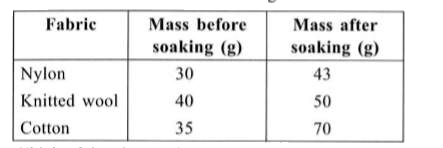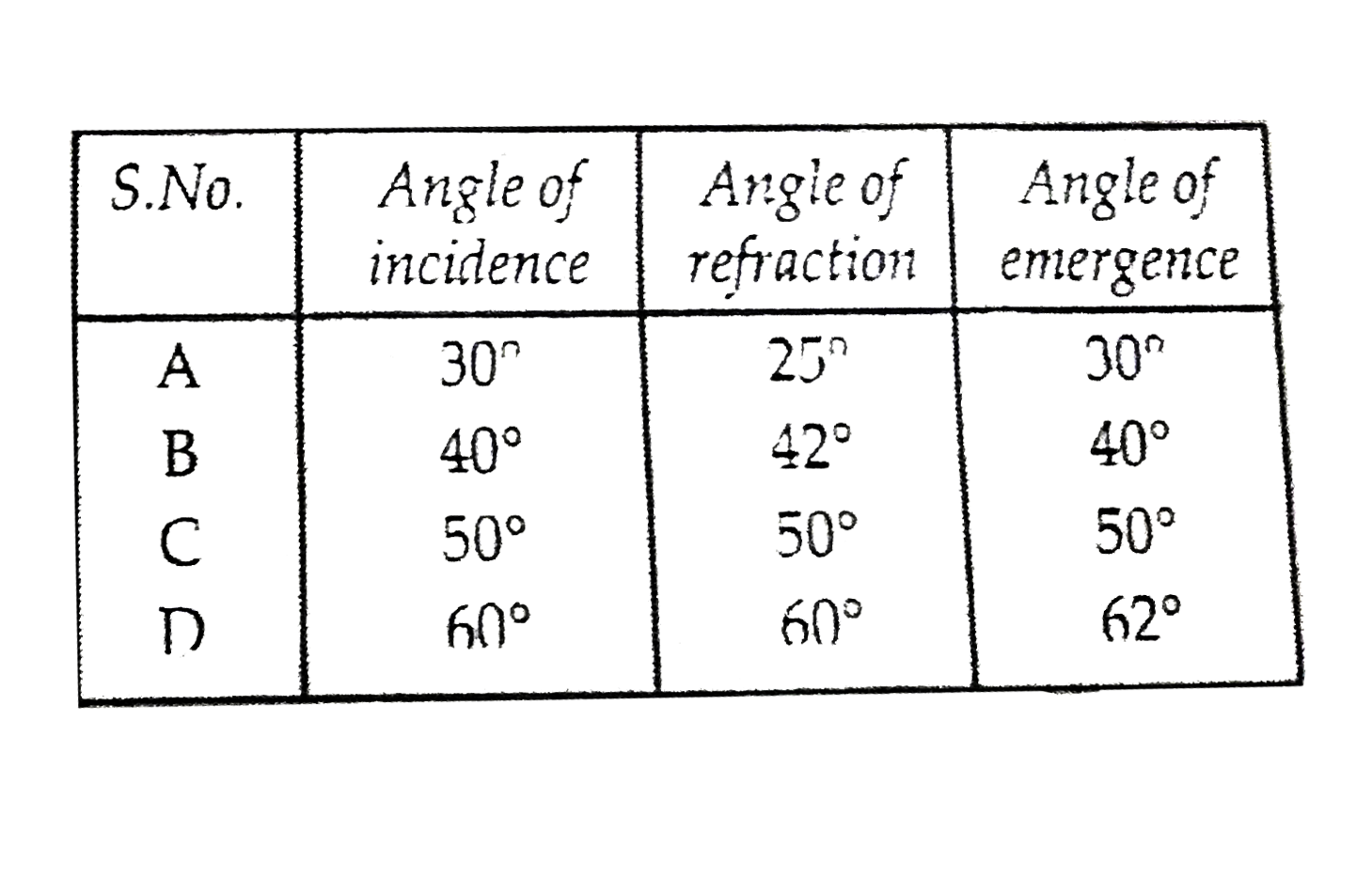Rahul performs an experiment. He cuts out equal sized squares from each of the three fabrics - nylon, knitted wool and cotton and weighs them. He then places each fabric square into a beaker containing 500 mL of water.

After 10 minutes, Rahul removes the fabric squares from water, weighs them again and records his observations in a tabular form as given below.

Which of the observations made by him is incorrect?
A
Nylon
B
Knitted wool
C
Both A and B
D
None of these
Text Solution
The correct Answer is:B
Wool absorbs maximum water and nylon (synthetic fibre) absorbs minimum water. Water absorption capacity of wool > cotton > nylon.
|
Topper's Solved these Questions
- NSO MODEL TEST PAPER -1BOOK - SCIENCE OLYMPIAD FOUNDATION CHAPTER - NSO MODEL TEST PAPER -1EXERCISE - ACHIEVERS SECTION
2 Videos
- LIGHTBOOK - SCIENCE OLYMPIAD FOUNDATION CHAPTER - LIGHTEXERCISE - ACHIEVERS SECTION (HOTS)
5 Videos
- NSO QUESTION PAPER 2017-18 SET-ABOOK - SCIENCE OLYMPIAD FOUNDATION CHAPTER - NSO QUESTION PAPER 2017-18 SET-AEXERCISE - ACHIEVERS SECTION
3 Videos
Similar Questions
Knowledge Check
Rahul, a class 8 student conducted the following experiment and recorded the observations in the given table.

The correct observation and inference drawn areAI, balloon has a higher ignition temperature than water hence, it explodesBII, water increases the melting point of balloonCIII, water in the balloon absorbs the heatDII, water conducts the heat away from the balloon.5 dry raisins were placed in each of the two beakers containing 50 mL of water. After four hours, the raisins were taken out and wiped. For calculating the percentage of water absorbed by raisins, the raisins should have been weighed:
Aonly before placing in waterBonly after four hours of their being in waterCboth before and after placing in waterDbefore and at intervals of every hourYou place a piece of potato weighting 0.3 gram with a water potential of 1 MPa in a beaker of Pepsi. After 10 minutes, you remove the potato piece, and it now weighs 0.25 gram. You conclude that
APepsi Cola has a water potential greater than 1 MPa.BPepsi Cola has a water potential of 0 MPa.CPepsi Cola has a water potential less than 1 MPa.DPepsi Cola does not have turgor pressure, and so you cannot conclude anything about its water potential.
Some terms related to fabrics are jumbled up and given below. Write them in their correct form.
bisref
View SolutionSome terms related to fabrics are jumbled up and given below. Write them in their correct form.
onttoc
View SolutionSome terms related to fabrics are jumbled up and given below. Write them in their correct form.
sinnping
View SolutionA student performed the experiment of glass slab and with different angles of incidence measured the angles of refraction and emergence in each case. He then recorded his observations as given in the table.

The correct observation is :
View SolutionThe substances applied to fabrics before dying them is called :
View Solution
